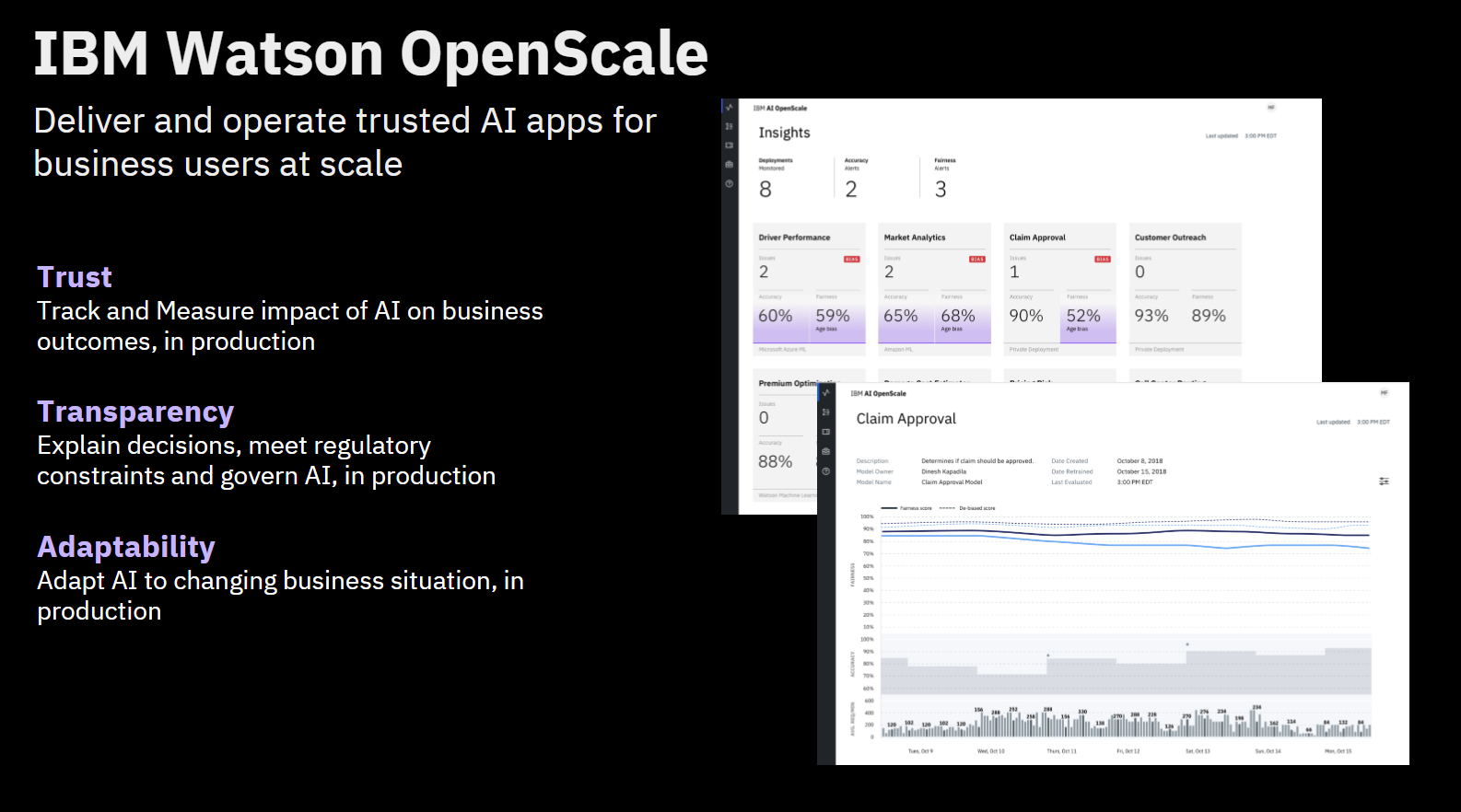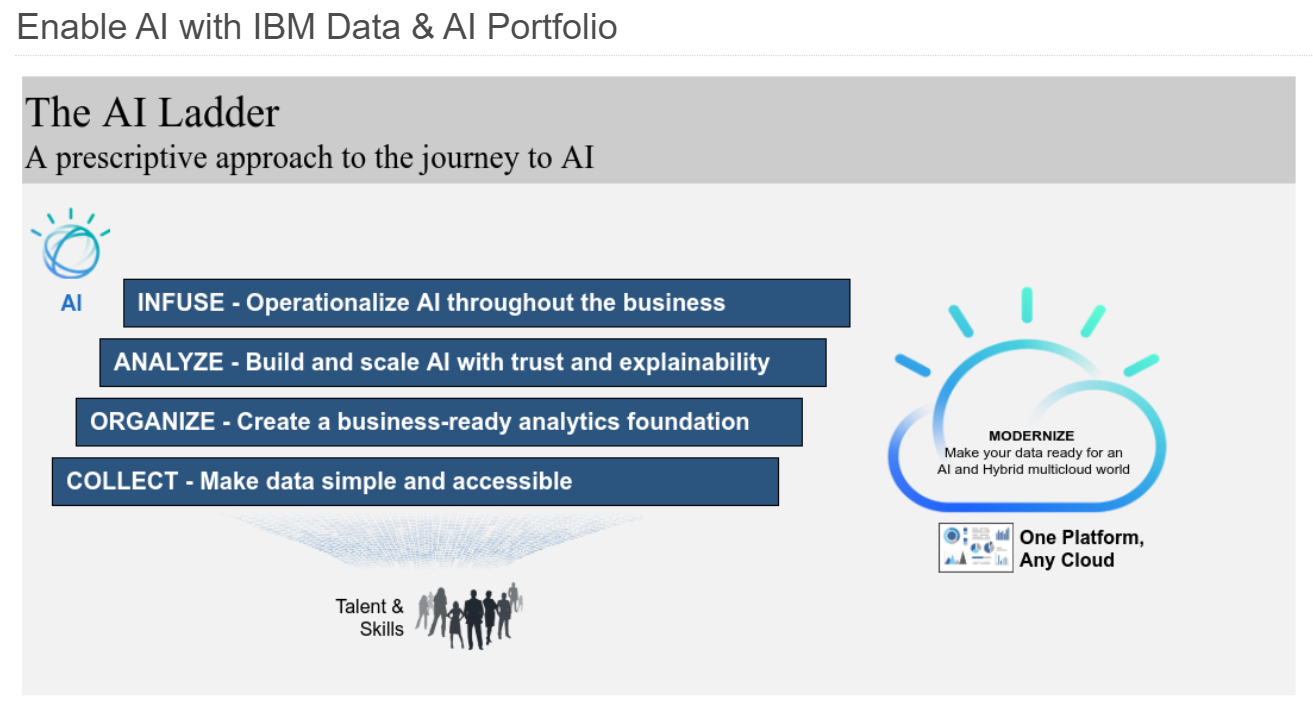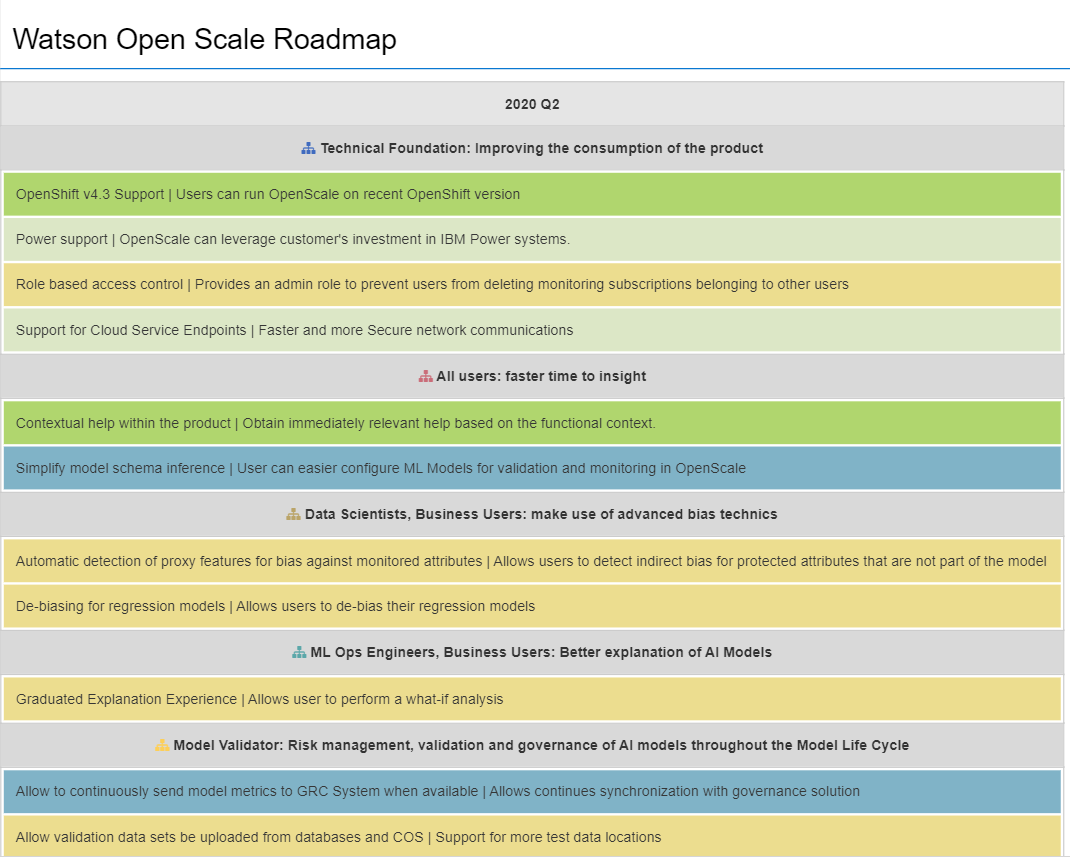Introduction
IBM Watson OpenScale documents all of the algorithms used in machine learning across its lifecycle to ensure fair, explainable and compliant outcomes for models built and running anywhere.

- Businesses from every industry are investing in AI, ramping up platforms and skills. While they see the business value that artificial intelligence can offer, many are hesitant to move their AI experiments from pilot to production.
- AI can seem like a black box. It can be difficult to explain a model’s predictions, and ensure outcomes will not be affected by unwanted biases.
- Organizations must have confidence in system’s ability to augment decision-making so that predictions result in compliant, fair and explainable outcomes.
- IBM Watson OpenScale provides these capabilities by bringing bias detection, explainability, and governance to AI and machine learning models.
- Designed to complement a business’s AI strategy, it automatically identifies protected attributes such as gender, ethnicity, marital status and age. Once detected, the configuration of bias monitoring for each is recommended, ensuring any bias found is tracked and mitigated.
- Tagging these attributes up front also makes data preparation easier and gives data scientists more time to focus on building and improving models.
- Tools, tests and metrics are presented in a way that business users can understand, reducing bottlenecks in production caused by too few expert users.
- Because perfect model accuracy and fairness are often at odds, these capabilities provide the ‘knobs’ to make adjustments. Businesses can control bias and ensure explainability and fairness for both regulatory compliance and operationalization.


Summary
- As the use of AI becomes more mainstream and a growing number of organizations are capitalizing on its many capabilities, there exists the need to address unwanted bias in AI algorithms.
- Businesses must ensure that their model’s predictions produce fair, accurate, and unbiased outcomes before allowing those results to supplement decision making throughout the enterprise.
- Contact us to learn how Watson OpenScale can complement your organization’s AI strategies and help maintain compliance with corporate policies and regulatory rules.

